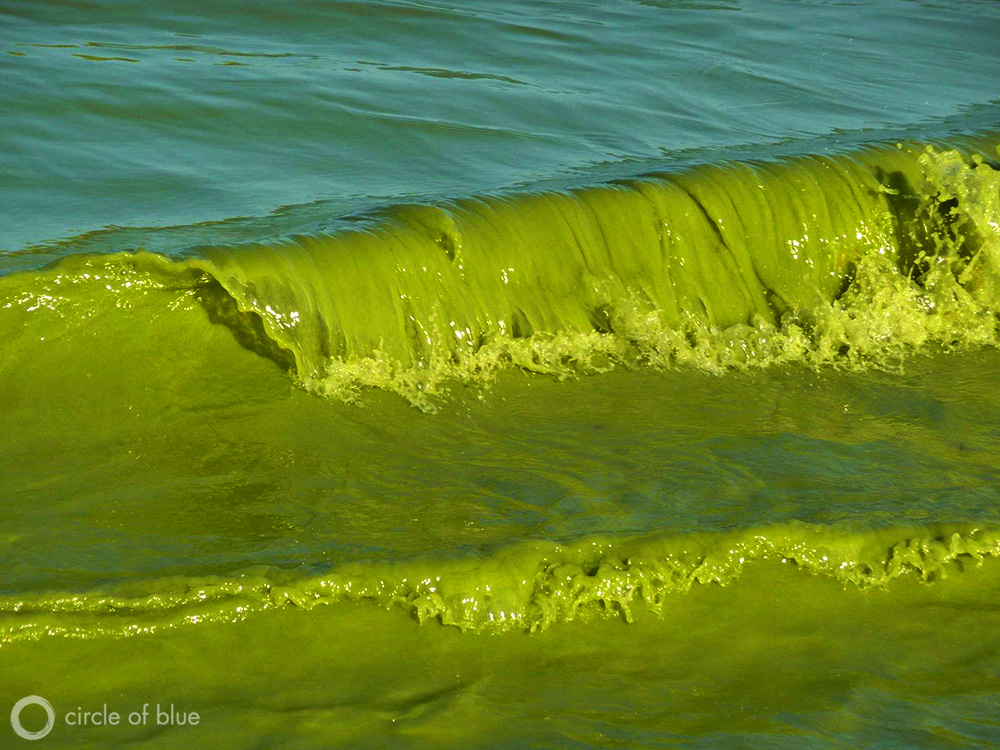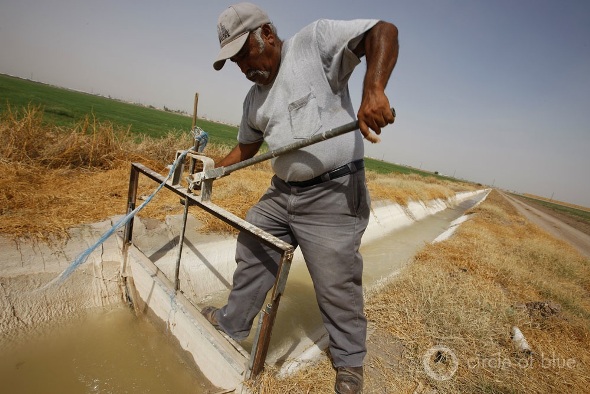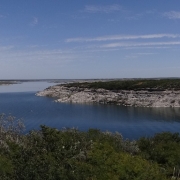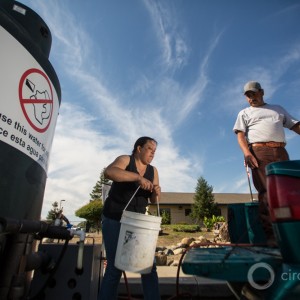Binational Lake Erie Phosphorus Targets Proposed to Curb Algae
To limit toxic algae blooms, the United States and Canada will need to reduce nutrient pollution by 40 percent.
By Codi Kozacek, Circle of Blue
In the highest-level step toward ridding Lake Erie of toxic algae and a low-oxygen dead zone, a binational committee Thursday proposed the first new phosphorus reduction targets for the lake in 32 years. The recommended targets would cut the amount of phosphorus flowing into the lake by 40 percent.
The proposal is the second major action to address algae blooms in as many weeks. On June 13, the leaders of Michigan, Ohio, and Ontario committed to reducing the amount of phosphorus pollution flowing into western Lake Erie over the next 10 years. Both the target proposal and the state-level agreement settled on a 40 percent reduction in phosphorus, which is the amount scientists say would halt a scourge of algae that, over the past decade, has rapidly evolved into one of the grimmest risks to human and environmental health in the Great Lakes. Last year, toxins from an algae bloom in Lake Erie’s western basin shut down the water supply for half a million people in Toledo, Ohio. In 2013, a bloom contaminated public water supplies in nearby Carroll Township. The bloom this summer could equal or surpass the severity of last year’s bloom, according to forecasts.
The root cause is an excess of phosphorus flowing into Lake Erie from farm fields, lawns, and overflowing sewage systems—most in the Maumee River basin. The nutrient ends up in western Lake Erie, where it combines with the warm, shallow water to feed spectacular blooms of toxin-producing cyanobacteria, also called blue-green algae. The blooms are poisonous to humans and animals if ingested, and can cause rashes and other skin irritations if touched.
To address the problem, Canada and the United States updated the binational Great Lakes Water Quality Agreement in 2012. The agreement, which coordinates action between the two countries to address the most pressing environmental problems in the Great Lakes, was initially signed in 1972, when algae blooms first plagued Lake Erie. At the time, the countries decided it was necessary to cut phosphorus discharges into the lake by more than 50 percent. Six years later, they set a goal to cut phosphorus a further 25 percent. Since 1981, this goal was largely met or surpassed, and the last time the targets were revised was 1983.
Nonetheless, scientists found that an increasing proportion of dissolved reactive phosphorus—a type that is easier for algae to use—caused problematic algae blooms to reemerge and grow to unprecedented size over the past decade.
The 2012 GLWQA revisions once again set a goal to vastly reduce algae blooms and the associated dead zone—an area in Lake Erie’s central basin where oxygen levels are too low to support fish or other animals. To meet this goal, a binational group of subject matter experts — called the Nutrient Annex subcommittee and co-led by Environment Canada and the U.S. Environmental Protection Agency — was created in 2013 to recommend new phosphorus reduction targets by 2016. The working group presented their recommended targets Wednesday at a Chicago meeting of the Great Lakes Executive Committee, which coordinates programs under the GLWQA. The targets will undergo a period of public comment until August 31, and then a final proposal will be submitted to Canada and the United States by February 2016.
If adopted by the United States and Canada, the proposed targets, relative to 2008 phosphorus discharges, would:
- Reduce by 40 percent the total phosphorus entering lake Erie’s Western and Central basins annually.
- Reduce by 40 percent both the total and dissolved reactive phosphorus from the Maumee River during the spring season, which runs from March 1 to July 31.
- Reduce by 40 percent both the total and dissolved reactive phosphorus during the spring season from the following watersheds: Huron River; Leamington Tributaries; Maumee River; Portage River; River Raisin; Sandusky River; Thames River; Toussaint Creek.
Under the Great Lakes Water Quality Agreement, state and province-level domestic action plans to meet the new targets are required by 2018.
A news correspondent for Circle of Blue based out of Hawaii. She writes The Stream, Circle of Blue’s daily digest of international water news trends. Her interests include food security, ecology and the Great Lakes.
Contact Codi Kozacek













Leave a Reply
Want to join the discussion?Feel free to contribute!